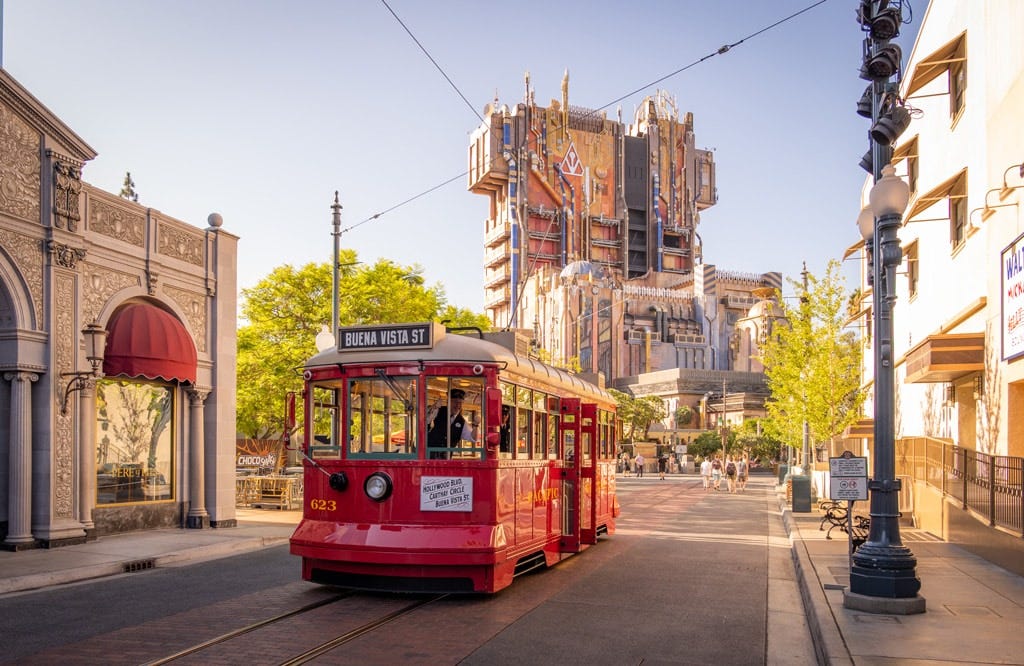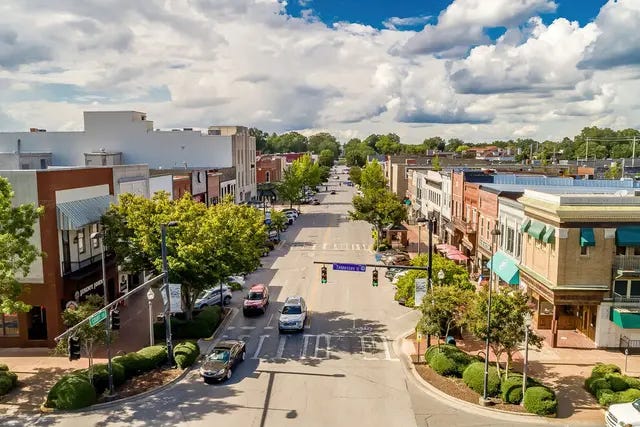New Streetcar Arrives, RIP Soft Power Legend, Lost Bet Walk to Work, & More
Around the College Towns: Links and commentary related to urbanism and higher ed for the week of May 3 - May 10.
Note: I use this link round-up to (mostly) focus on stories that fell through the cracks in terms of higher ed and urbanism, rather than big national news (although, sometimes I am forced to do the big stuff). Please send over any tips, authors, or content to cover.
New Streetcar Line in Orange County
Orange County, California, where I live, is opening up a streetcar line. I have my qualms with the execution, but I am hoping for the best. We certainly need more public transit down here in this part of Southern California.
The PR team for the project proclaimed the “first OC Streetcar vehicle as arrived.” While I understand they meant the first of these new modern street cars, I didn’t want people to be confused that this version is the first one in the county. Our streetcars, interurbans, and rail lines in general are a lost history, especially in Southern California, where everyone falsely claims we were built by the automobile.
By my count, the OC Streetcar is the third version of this in Orange County. The first comes from Pacific Electric, which was at one point the largest interurban system in the world. It went across the Los Angeles area, including down here to Orange County with the Santa Ana Line (pictured below). It is a shame we ever lost this.
The next one comes from the Happiest Place on Earth. Disneyland! The Red Car Trolley was a throwback to LA’s streetcar history. It ran throughout the park California Adventure until this year, as Disney decided to shut down the ride. Fitting that the homage to the original public transit in the area was also shuttered.

Despite not being the first, I am still interested in the progress with OC Streetcar. Santa Ana in particular seems to be one of the only places making strong decisions on urbanism. I hope to have a review of the OC Streetcar later in the summer.
RIP Professor Joseph Nye
Joseph Nye died this week. He was the former Harvard professor who coined the term “soft power.” He also had a significant political advisory career, with a high-ranking foreign policy role under President Bill Clinton.
Safe to say, he was one of the most prolific political scientists of this era. Not just US policy, but governments around the world consider his soft power concept in making foreign policies. He was truly an impressive academic.
I have my own connection to this giant. When I was doing my first MA back at Yonsei University in Korea, I was using the soft power concept as the primary framework for my thesis. So I was reading everything that Nye wrote. I had some kind of clarification on his theory that I was wondering.
Me, being a naive graduate student, decided to simply email my question over to Professor Nye. The next day, he responded! He couldn’t give me an exact answer, but sent over an unpublished essay that grappled with the same issue (China and soft power).
Since I didn’t know anything about academia at the time, I figured this was fine and normal. Now that I am a professor, I know this is indeed not normal in academia. I’ve had colleagues who barely answer their emails, let alone this titan of the sector.
This guy who advises US presidents and influences other world leaders answered a random email from a twerp grad student from across the world. Nye was the kind of professor we should aspire to be—always teaching, no matter the level.
So I will always remember that kindness and dedication that Professor Nye gave me. Even to this giant of the field, the little things mattered. RIP to the legend Joseph Nye.
Other Links
The Institute of Technology opens the first American university branch campus in India. My guess is this will be the next big trend for the next decade or so.
California saw a slight uptick in population after years of post-COVID decline, especially in the cities.
Boston news station blames students for the housing crunch rather than the terrible housing policies. Nowhere do they mention zoning. After all, “more than 80 percent of the available land is zoned solely for single-family homes.”
Students at Trinity University don’t want to live on campus for 3 years. The reasons for the 3-year rule list a lot of squishy soft skills, but I can guess that there is a simpler reason: money.
The housing situation is so bad at North Carolina Central University—“mold,” “bugs,” “flooding”—that protests broke out over the conditions, and police had to be called in to detain some protesters. Bleak.
Likewise, students at Texas Southern University in Houston are also protesting for more housing. Upperclassmen get pushed out into market-rate rentals, which can be more expensive in the city.
Small liberal arts college in Michigan, Kalamazoo College, is building new dorms for the first time since 1967. Glad fellow liberal arts colleges are doing well!
Speaking of small colleges, USA Today ranks the top “Small College Towns,” which I know these kinds of rankings are cheese ball clickbait, but I can’t help myself seeing these beautiful places.
10. Frostburg, Maryland
9. Williamsburg, Virginia
8. Cape Girardeau, Missouri
7. Saratoga Springs, New York
6. Ruston, Louisiana
5. Clemson, South Carolina
4. Murray, Kentucky
3. Jacksonville, Alabama
2. Oxford, Mississippi
1. Florence, Alabama

Around Substack
Note: I also think it’s important to shout out some fellow Substackers whom I am reading here this week. Here are a few:
Tim Daly, another fellow Substacker writing on education, posted recently about drops in enrollment for urban school districts. I blame our policies in American cities that are generally anti-family (I hope to have more on that in the future).
Cities have fewer children than they did a generation ago. Eighty percent of metro areas are trending downward in terms of kids aged 0-14. In the three years immediately following the arrival of COVID, our three most populous regions - New York, Los Angeles, and Chicago - lost an astonishing 600,000 children
Zak Yudhishthu at Pencilling Out recently wrote about the ups and downs of urbanism in Saint Paul, Minnesota. I am always impressed by the urbanism movements that have come out of Minnesota (see Strong Towns).
I love Saint Paul very dearly, and I still maintain optimism about the city’s future — it is certainly not doomed. There are positive stories about the city’s economic future… Yet thinking about both historical and contemporary research on the feedback loops that drive urban revitalization and decline is important, even if some of the lessons are pessimistic.
M. Nolan Gray, the author of the wonderful zoning book Arbitrary Lines, writes here as The YIMBY City Planner. He has a new one on the complex impact of Prop 13 on California’s housing.
Proposition 13 created a situation where, until things got really bad, the average homeowner could stop caring about housing affordability. Only now that the California housing crisis has gotten to be so bad that it hurts even incumbent homeowners—their children and grandchildren moving away, tent encampments sprouting up near their home, their city on the verge of bankruptcy, the cost of everything going up—is meaningful reform finally underway.
Finally… NBA Commentator Loses Bet, Has to Walk to Work in LA
Paul Pierce, NBA Hall-of-Famer and now commentator, made a bet with his colleagues that if his old team Boston Celtics lost Game 2 of the playoff series against the New York Knicks, then he would walk to work. Well, the Celtics did lose, and Pierce was a man of his word. He walked 20 miles to the studio in LA.
It was hilarious to watch him trying to navigate LA as a pedestrian. LA is so hostile to anyone not in a car. It does have some good walkable pockets, but they are not connected. So walking long distances usually puts pedestrians in car sewers, stroads, and highway overpasses. It was a miserable walk for Pierce.
Funny, yes. Actually, I’d love to see a trend of people making bets with their coworkers, and the loser has to walk to work. It would give more people insight into the terrible conditions for pedestrians. Maybe this would help propel some changes.










